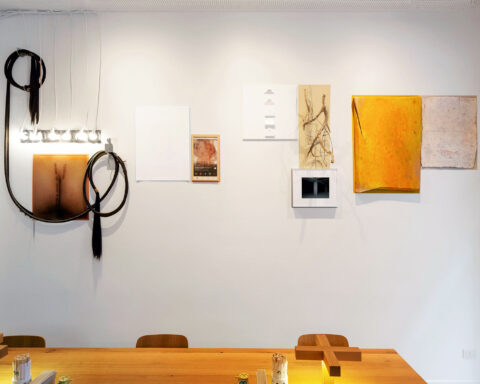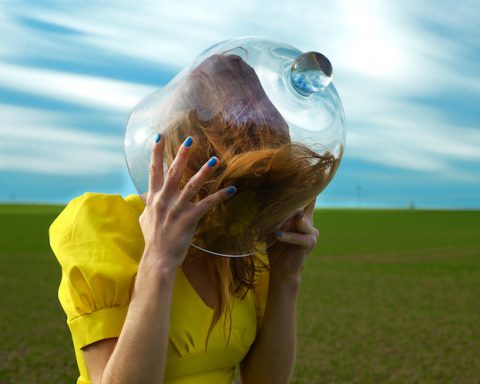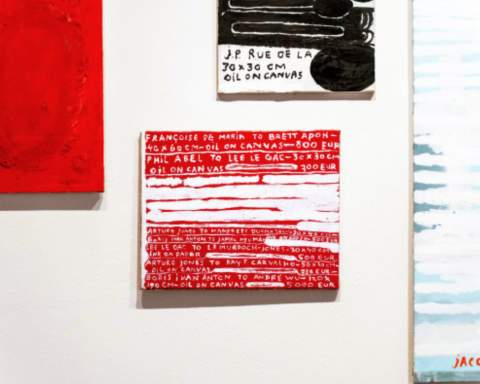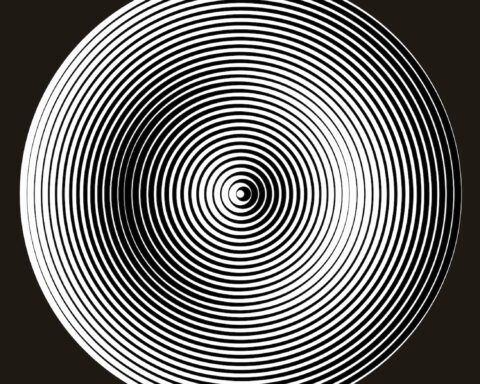Guilherme Cuhna is a Brasilian artist, he was born in Belo Horizonte in 1981.
He studied at the Minas Gerais State University in Brazil. Chuna has won several awards, such as the XIII Prêmio Funarte Marc Ferrez, the Prêmio Klaus Viana, the photo prize of Biennial do Recôncavo Baiano and he was a finalist of Pierre Verger Photo Prize. In 2013 he was a Director and Co-founder of FIF_BH, International Photography Festival of Belo Horizonte, where he lives and works.

IMAGINARY DIALOGUES
Video installation 2013
IMAGINARY DIALOGUES
Video installation 2013
Francesca Pirillo: Who are you and what do you do?
Guilherme Cuhna: Later on in 1998, I started to study some basic art fundaments and photography during an exchange student program in Brussels, Belgium. In 1999, I entered the Guignard Art School of Minas Gerais State University (Brazil) and graduated in 2004, with emphasis in drawing and ceramics. From 2001 to 2002, I took part in a scholarship program at the Pittsburg State University (USA), studying laboratory photography, painting, sculpture, contemporary art theory, anatomy, polymer engineering and digital image. Since then, I’ve been collaborating with projects in a variety of creative areas such as contemporary dance, experimental costumes and set design, movies, music and theater, as a possibility to expand the reach of my research as an artist.
I’m a Brazilian artist and an independent multi-knowledge field experimental researcher also working as a cultural entrepreneur and producer, using the possibilities presented by an artistic practice to communicate ideas within different spheres of the social structure.
F.P.: What is your artistic background and what determines how you choose the process and the medium?
G.C.: The first contact I had with the universe of visual poetics came through my maternal grandmother, Teresinha Paiva, painter in Belo Horizonte.
My earliest childhood memories are of her home studio with a strong smell of oil paint, packed with books, glass jars with brushes soaked in thinner, remains of used rags and palettes with multicolored masses of hardened paints, drawings and small studies for sculptures everywhere. These memories are still very present and influencing my professional choices. Her home studio was a place where creativity, imagination and experimentation became, some how, real and tangible.

BRA (IN_TO) BRAIN COMMUNICATION
Perfeormance 2012
Later on in 1998, I started to study some basic art fundaments and photography during an exchange student program in Brussels, Belgium. In 1999, I entered the Guignard Art School of Minas Gerais State University (Brazil) and graduated in 2004, with emphasis in drawing and ceramics. From 2001 to 2002, I took part in a scholarship program at the Pittsburg State University (USA), studying laboratory photography, painting, sculpture, contemporary art theory, anatomy, polymer engineering and digital image. Since then, I’ve been collaborating with projects in a variety of creative areas such as contemporary dance, experimental costumes and set design, movies, music and theater, as a possibility to expand the reach of my research as an artist.
The poetic process that I’m involved with is mainly determined by existential issues that reflect a constant research exercise across diverse fields of knowledge- biology, physics, neuroscience, acoustics, sound and mechanical engineering and philosophy-intersecting with art. The approach of this practice is not by any means scientific, technical or to be conclusive, regarding a given subject matter. It is artistic research based on creative experimental exploration and intuitive methods, using insights about the human condition, nature and culture from different disciplines. The idea resultant from this practice is the driving force that will determine the production process, the medium of the work and the spatial relations with the environment where it is to be showed.
F.P.: Could you describe to us the Bra (in_to) Brain Communication performance?
G.C.: This work consists of a NeuroPoetic experiment involving three persons, two EEG (electroencephalogram) analogical machines, a pair of LCD monitors and surveillance cameras forming a closed live video circuit, a wood table with two chairs and brainwaves. In the beginning of the performative act, two performers arrive at the scene where the equipment is set up, and they sit at the table facing each other. A technician connects them to individual EEG machines, and according to protocol, fills the needles’ ink compartment with blue ink, fits the paper roll in the mechanical tray, and runs some preliminary tests before turning the equipment on. Once it is on, the mechanical tray starts to push the paper forward, at the same time that the group of nine needles, connected to sensors fixed to the participants head, starts to move causing the formation of horizontal line like shapes on the paper, as abstract representations of the electric impulses coming from separate areas of the brain.
Each participant has an LCD monitor in front of them attached to the table, displaying the live video of the other’s neural electric activity. For 15 minutes, they remain seated still and in silence, looking at the monitor, being visually exposed to the constant updated brainwave data of each other, responding to it in real time through a closed video surveillance system, as if they were sending, receiving and answering the brainwave messages at a constant rate. After the determined time, the performers stand up, leave the scene, and the technician turns off the equipment. The communicative dynamics proposed by the work do not rely on phonetic, symbolic or gestural codes to promote the exchange of information but on immediate expressions of the brain’s electrical responses, enabling, for that matter, the activation of a platform, yet embryonic, for direct brain communication. The work was produced with the participation of the Brazilian artist Paulo Bruscky.

INTRA_ORGANIC COMMUNICATION MODULE
Installation, 2013
INTRA_ORGANIC COMMUNICATION MODULE
Installation, 2013
INTRA_ORGANIC COMMUNICATION MODULE
Installation, 2013
F.P.: What subjects do you deal with in your art?
G.C.: My current practice as an artist is mainly oriented by the production of experimental environments and installations dealing with sensorial and perceptive frontiers. The human ability to produce knowledge from perception and the study of the possibility to promote cognitive displacement and expansion throughout aesthetic experiments are central points of reflection, which gravitates around my research. In this practice, the intersection of art with other disciplines plays a major roll, contributing to the promotion of a less partial and more integrated view of the phenomena of life and society.
F.P.: One of your most frequent themes is communication between people, like in Imaginary Dialogues and Intra Organic Communication Module. Can you explain that a bit more?
G.C.: For some time, I’ve been studying about the formation of ideas, concepts, and the origins of different systems of thought. All these elements are part of a very intense, plastic and organic process that have a strong influence in the way people, according to their own time period, perceive and understand the world, define notions of reality and the determine the cultural codes used to identify themselves as part of a given social group. In very general terms, since the invention of the alphabet, words are the main medium through which the exchange of ideas, concepts and thoughts are made, despite the growing emergence of an imagetic culture. The current western alphabet has around 26 letters and 52 phonetic symbols representing the sound used in a linear and sequential way, under very specific rules, to form the words. If we consider that the electromagnetic spectrum is in principle infinite and continuous, it becomes clear that it would be very hard to make sense of this infinite resource of life, in a less partial and incomplete way, using a system of thought and language based on the combination of 52 sounds. But also, it is hard to agree, that we can only produce knowledge and meaning with words, out of the combinations of these small groups of sound. How could the meaning of other sound vibrations and frequency be accessed? Would other communicative platforms, less linear and sequential to the exchange and the production of ideas, be able to incorporate a broader group of elements? Some of my latest works consist of the design of experiments for proposing other possible platforms of communication, and reflections about the fragility of our information exchange processes along with its many interference fields. In the IntraOrganic Module installation, participants from inside an acoustic wood cabin communicate through the exchange of the sounds of their heartbeats.
F.P.: What about the Incomplete Mutation installation?
G.C.: This work represents a poetic reflection about the relationship between biological species mutation and perception. In the body of humans, animals, fish, insects, etc, the sensorial instruments are placed according to specific conditions and programed to respond to different portions of the electromagnetic spectrum wavelengths. The size of the brain also influences on how much of the world’s information a species will be able to access. Humans, thanks to abstract thought, are able to understand and conceive the existence of a different reality beyond its immediate realm of sensorial reach.
The work, Incomplete Mutation, divided with 5 small speakers, presents an audio piece of the narrative of 390 names of colors. This arrangement of factors provokes hybrid visual auditory stimuli causing people to see colors mentally, induced by auditory inputs. According to what has been studied, color is a sensation depending on so many conditions that manifest itself in the brain, more than a quality of objects and things. Due also to the fact that the kind of colors each species is able to see, depends on their visual receptors and brain development. We could then speculate that colors we see are as much imagined, as they are perceived.
F.P.: What role does the artist have in society?
G.C.: Art is a very potent instrument for human development, contributing to the expansion of sensibility, perception and discernment. Intuition, imagination and creativity are essential elements that have helped shape societies and have changed the curse of history, teaching human beings the strength of the mind over time and oppression.
Art has been used for conflict mediation, as resistance statements and consciousness paradigm shit.
But also, has been used for political propaganda, has submitted to the entertainment industry and has become a global speculative market. The artist cannot be naive about his role in society. The act to encourage reflection, stimulating the expansion of perception and sensitivity through the free expression of creative thinking, is to collaborate with the empowerment of the subject. The autonomy of thought and critical posture towards established models of society and government systems are powerful political tools for social transformation, that can change the meaning of things, alter concepts and modify ideas, impelling people to make different choices. That being said, I think the crucial role for the artist from any society is just to not be indifferent to the human factors of context in which he exists.
Historically, the role of the artist has changed.
Art has been used for conflict mediation, as resistance statements and consciousness paradigm shit.
But also, has been used for political propaganda, has submitted to the entertainment industry and has become a global speculative market. The artist cannot be naive about his role in society. The act to encourage reflection, stimulating the expansion of perception and sensitivity through the free expression of creative thinking, is to collaborate with the empowerment of the subject. The autonomy of thought and critical posture towards established models of society and government systems are powerful political tools for social transformation, that can change the meaning of things, alter concepts and modify ideas, impelling people to make different choices. That being said, I think the crucial role for the artist from any society is just to not be indifferent to the human factors of context in which he exists.

ARTIFICIAL ATMOSPHERE
Installation
24 Medical Air Cylinders 2013
F.P.: Name something you love, and why.
G.C.: I’m going to try not to love some random material thing just to avoid contributing to the movement promoting the attachment of human sentiments to inanimate objects. My loving act is going to be direct here to a major elemental force of nature, Life, in its both aspects, systemic and mental.
The concept I would like to bring up is of Life not simply as the personal feeling of being alive, or the possibility of enjoyment, but of the universal phenomena, Life, as the most intense, minds challenging, and creative force of the planet. The countless molecular combinations and the complexity of the interaction between structures and systems producing entire beings, semi-autonomous and autonomous species, able to reproduce themselves, grow, mutate, to think, design meaning and develop societies are absolutely amazing.
F.P.: Where is your art going next?
G.C.: My goal is to continue the on going research about human cognition and the formation of ideas focus on the design of cognitive displacements experiments. I have being working with sound and light for the last year and I would like to give more attention now to the studies related to the brain and its faculties applied to the field of biofeedback technology.











